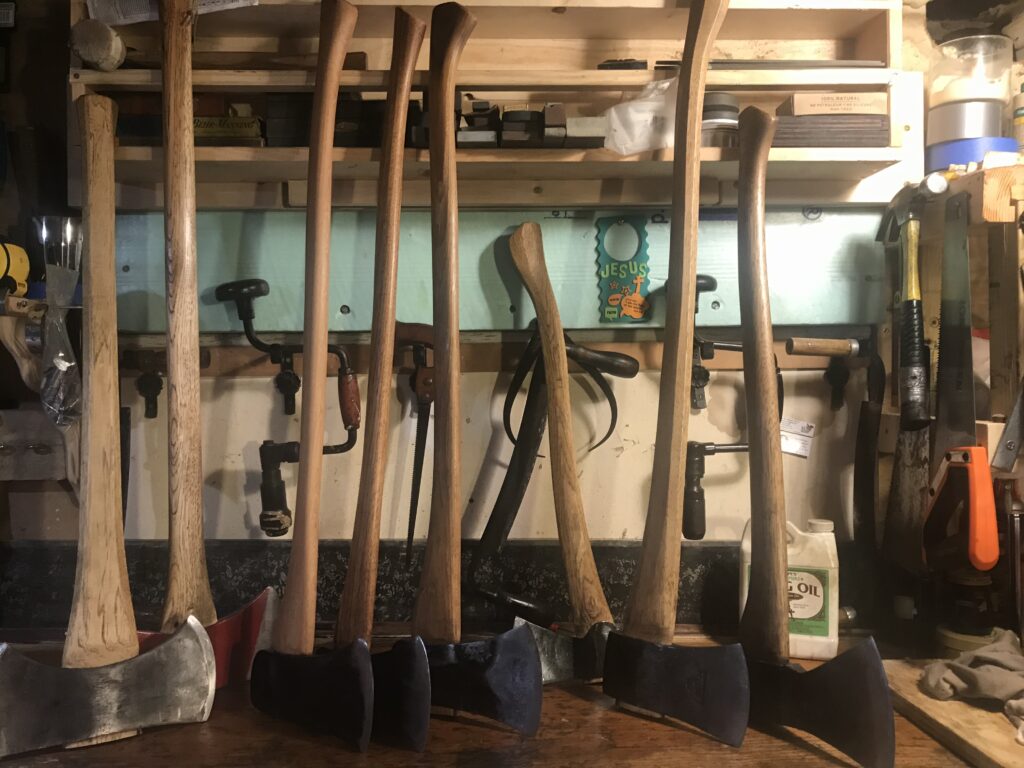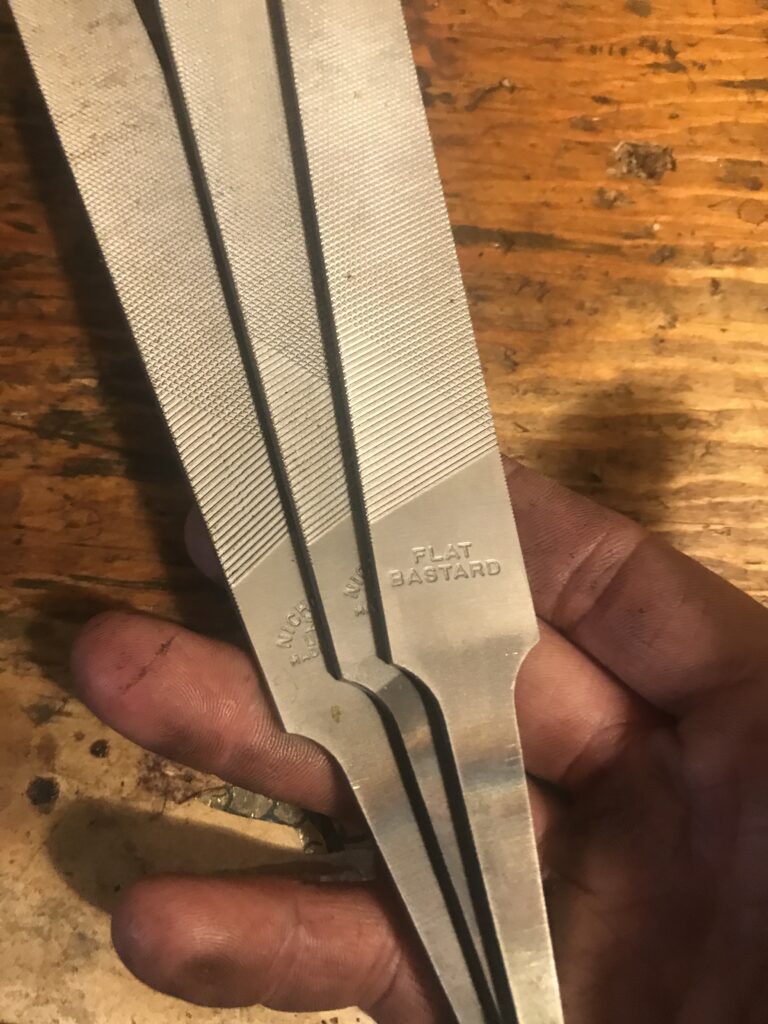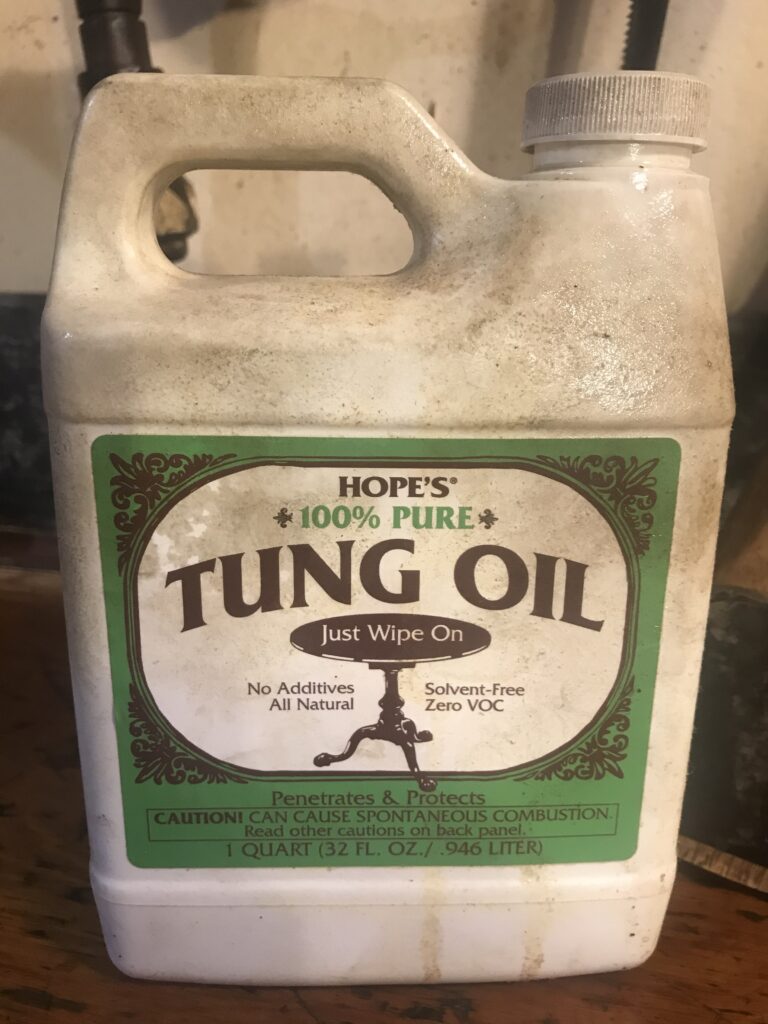
One is ill-advised to fight the market in a Shemitah Year.
In anticipation of turmoil, I raised cash and headed to the woods, where I have been felling, bucking and chopping on an almost daily basis since February, putting up several cords of wood for what I anticipate to be a long, cold winter.
It is our intention to heat primarily with wood, with an around-the-clock fire in the larger of our two wood stoves. Fuel will consist of what is available to us in the woodlot: pine and maple.
The pine stands are at the end of their lives and need to be processed. Ash is already emerging from the forest floor as its successor. The maple stands are coming into their own, but need to be aggressively managed and thinned.
I don’t use power tools.
I use axes.
Forestry is perhaps a greater passion than stocks. Were the world to end as we know it, our currency rendered valueless, I would certainly resort to forestry for a livelihood in an interim barter economy. In fact, it is just such an economy for which I am preparing in earnest.
Even so, I am still making calculated, albeit cautious, bets on gold, silver, titanium, and antimony. I am buying when issues appear sufficiently distressed and when > 2 standard deviations from their cycle means. But these investments do not require active trading, so the balance of my time is spent as previously described:
With an axe in my hands.
Much of the knowledge about axemanship of which our forebears were stewards has been lost to time. Consequently, the vacuum has been filled with latter-day wisdom that is less in the service of the real-world lumberjack and more so in the service of merchandisers.
I’ve learned that almost any old axe of sufficient length, sharpened well, in the hands of an able lumberjack, will prove serviceable.
We all know what ‘sharp’ means and there are lots of ways to get there, but a great deal of effort has been devoted by axe manufacturers and fanboys to re-mystify edge sharpening. You don’t need a special round stone when an 80 year old hunk of Carborundum and spit will suffice. And you don’t even need the Carborundum when one has an old bastard file to touch up an edge in a pinch in the field. But how sharp is sharp enough?

Edge-on, if you can see daylight on the edge, it’s dull enough to slow you down a bit.
Over time, I have discovered that I am able to do as much work with a $30 thrift store axe as with a $180 axe hand-forged in Germany, given that the edge has been properly prepared.
You’ll hear lots of talk about thinning handles, as modern axe handles have grown club-like, but as time has worn on, thickness is proving of less consequence to me as I’m barely holding on by the time the axe lands home, whether felling, bucking or chopping. Effectively, once coordination has developed, a lumberjack is throwing his axe into his target, and as a result, the wear and tear on one’s hands and elbows is reduced dramatically. That being said, thin your handles after an ovular (egg-like) fashion from between 14-18 mm and I think you’ll be pleasantly surprised by increased accuracy, agility and endurance. Today’s epidemic of handle-thickness is often a function of bad grain orientation, runouts and heartwood inclusions. If any or all of these things are present in your handle, expect breakage sooner or later.
I don’t think axemanship is a science. A handle length and head weight that works for one will not work for another. I have facility with any axe longer than 29″ and a head weighing no less than 3.5 lbs. I am most comfortable with a handle that is in the vicinity of 34″.
I am not partial to single or double-bit axes. I use both. But there is an advantage to the double-bit in the field where one edge may be reserved for felling and bucking, and another edge for limbing and work close to the ground where blunting is probable.
I’ve learned a lot from Dudley Cook’s, The Ax Book (keeping Warm with an Ax [original title]), 1981. It’s a practical, no-nonsense, invaluable, and dare I say, legendary tome.
For first-time buyers of an axe, I wouldn’t recommend anything light-weight with a short handle. You’ll never develop the requisite strength, stamina and coordination to work long, productive days in the woods. Find a 3.5 lb. axe head on a 31-36″ handle, a sturdy sheath (Harry J. Epstein Co. make good ones), and a Nicholson flat bastard file and you’ll be well on your way to becoming a woodsman, given you can find some suitable trees to chop down.
One final thought: everyone talks about oiling up your handle with boiled linseed oil. Boiled means doped with metal drying agents, which could prove harmful with extended exposure. Either use raw linseed oil and suck up the extra drying time, or use pure Tung oil. The old wisdom holds true for either one with a new handle: oil once a day for a week, once a week for a month, once a month for a year, and then once annually.

